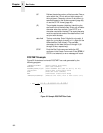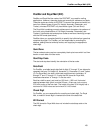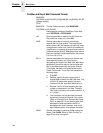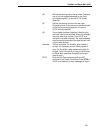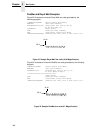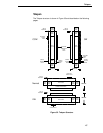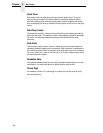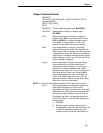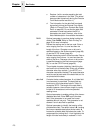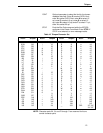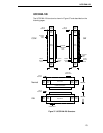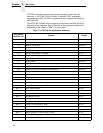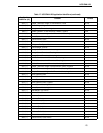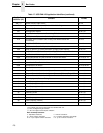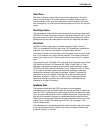
170
Chapter 3 Bar Codes
c. Replace
L
with a number equaling the total
number of characters in the field. (The actual
data provided dynamically during the Execute
Form Mode can be less than
L
.)
d. The information for the data field is entered
dynamically during the Execute Form Mode.
(Refer to “Execute Form: Dynamic Bar Code
Data” on page 63.) Do not use the
data field
parameter to enter data when the BF
n
;
L
parameters are used. However, refer to the
data field
description for available characters.
DARK Optional parameter to produce darker looking bar
codes. Enter DARK. Refer to “Dark Printing” on
page 28 for more information.
SR
Defines the starting row for the bar code. Enter a
value ranging from row 1 to one less than the
length of the form. Character row or dot row is
specified based on the Scale command (page 89),
or use the CP.DP format (page 26).
SC
Defines the starting column of the bar code. Enter a
value ranging from column 1 to one less than the
width of the form. Character column or dot column
is specified based on the Scale command (page
89), or use the CP.DP format (page 26).
(D)
The printable character (delimiter) identifying the
start and finish of the data field. Enter any printable
character other than a slash (/), the SFCC, or a
character used within the data. The same character
must be used at both ends of the data field, but it is
not printed with the data.
data field
Contains the bar code characters. A null data field
(no characters) is permitted. The data field can
contain any of the characters listed in Table 10
except the SFCC. The length of the data field is
variable; however, the maximum length is usually
limited to 32 characters to minimize potential
reading errors.
PDF Optional parameter to enable printing of the human
readable data field. Enter PDF to print the data
field. If the parameter is not used, the human
readable data will not print. This parameter is not
allowed if a null data field is specified.
LOC
Optional parameter to identify the location of the
printable data field. The default value is B, locating
the human readable data below the bar code. A
locates the printable data field above bar code. To
compensate for printing the 0.1-inch high data, the
height of the bar code body is reduced 0.1 inch.



